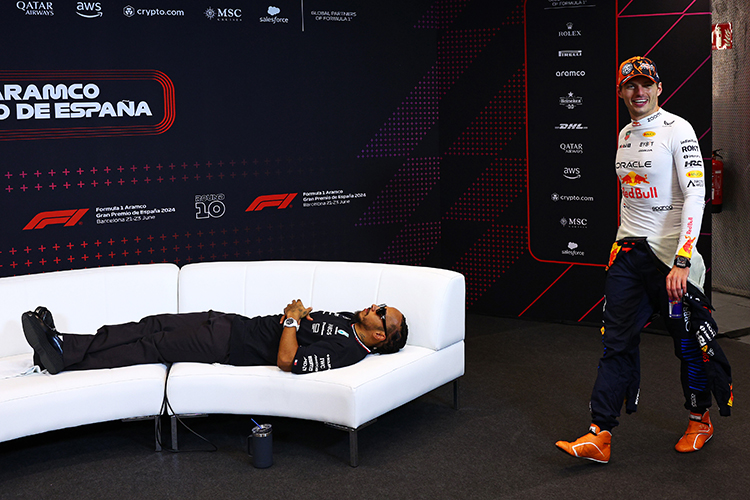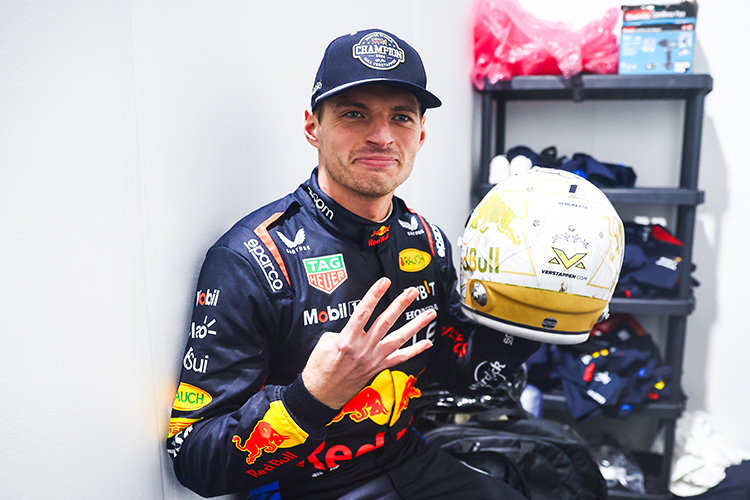Mercedes' disqualification costs George Russell F1 victory at Spa
 Red Bull Racing/Red Bull Content Pool
Red Bull Racing/Red Bull Content Pool
SPA-FRANCORCHAMPS, Belgium -- At Sunday’s Belgian Grand Prix, George Russell crossed the finish line just 0.526 seconds ahead of Mercedes teammate Lewis Hamilton, but was later disqualified, denying him the victory.
After routine post-race checks, it was discovered that Russell's car weighed in at 796.5kg—1.5kg short of the required weight under F1's technical regulations. The devastating discovery left Mercedes and Russell with no choice but to accept the disqualification.
"We have to take it on the chin," said Mercedes team principal Toto Wolff. "We have clearly made a mistake and need to ensure we learn from it. We will go away, evaluate what happened and understand what went wrong. To lose a one-two is frustrating and we can only apologise to George, who drove such a strong race."
Russell shared his disappointment on social media, describing the disqualification as "heartbreaking."
In an environment where every detail is meticulously accounted for and double-checked, finding a car underweight after a race is a rare occurrence. Teams typically design their cars to be as light as possible but add ballast to ensure compliance with the minimum weight requirements. The last time a similar situation occurred was in 2006, when Robert Kubica's BMW was disqualified for being 2kg underweight at the Hungarian Grand Prix.
While crash damage could serve as a valid excuse for a car being underweight, Russell's Mercedes crossed the line intact, pointing to an oversight.
Mercedes will spend the coming days investigating the reason for the weight discrepancy, theorizing that it might be linked to the remarkable one-stop strategy Russell employed to take the lead. Russell stretched a single set of hard compound tires over 34 laps, a move that saw him leap from fifth place to first as his rivals made their second pit stops.
"We have these race planners, which tell us where the cars are going to come out at the end, and at some stage, we saw we had to cover [Oscar] Piastri and [Charles] Leclerc with Lewis, so [putting Hamilton on a two-stop strategy] was absolutely clear cut," Wolff explained. "Nobody expected the hard to last, and we went longer and longer, then the planners said P5 for George in either case, one stop or two stops. So we said, 'Let's take the gamble.'"
Russell's tires remarkably held their performance, even after 20 laps, allowing him to take the lead when Piastri pitted for new tires. However, while the tire performance remained strong, the physical rubber was wearing away. A set of F1 tires can lose as much as 3kg in weight during extensive use, and Russell's 34-lap stint was unprecedented for Mercedes.
"We don't yet understand why the car was underweight following the race but will investigate thoroughly to find the explanation," said Mercedes trackside engineering director Andrew Shovlin. "We expect that the loss of rubber from the one-stop was a contributing factor, and we'll work to understand how it happened. We won't be making any excuses, though. It is clearly not good enough and we need to make sure it doesn't happen again."
Adding to the complexity was the fact that Mercedes hadn't run the hard compound tire during the weekend and had made significant setup changes after an underwhelming Friday practice session. The data was further obscured by the wet conditions on Saturday and recent resurfacing of sections of the circuit.
One unique factor of Spa-Francorchamps is its 4.3-mile length, which results in drivers not completing a cooldown lap before returning to the pits. This lack of a cooldown lap deprived Russell of the chance to pick up extra rubber and debris, which could have added weight to his tires.
Combining all these factors, while Mercedes’ mistake might be understandable, it remains, as Shovlin pointed out, inexcusably costly.
Up Next



